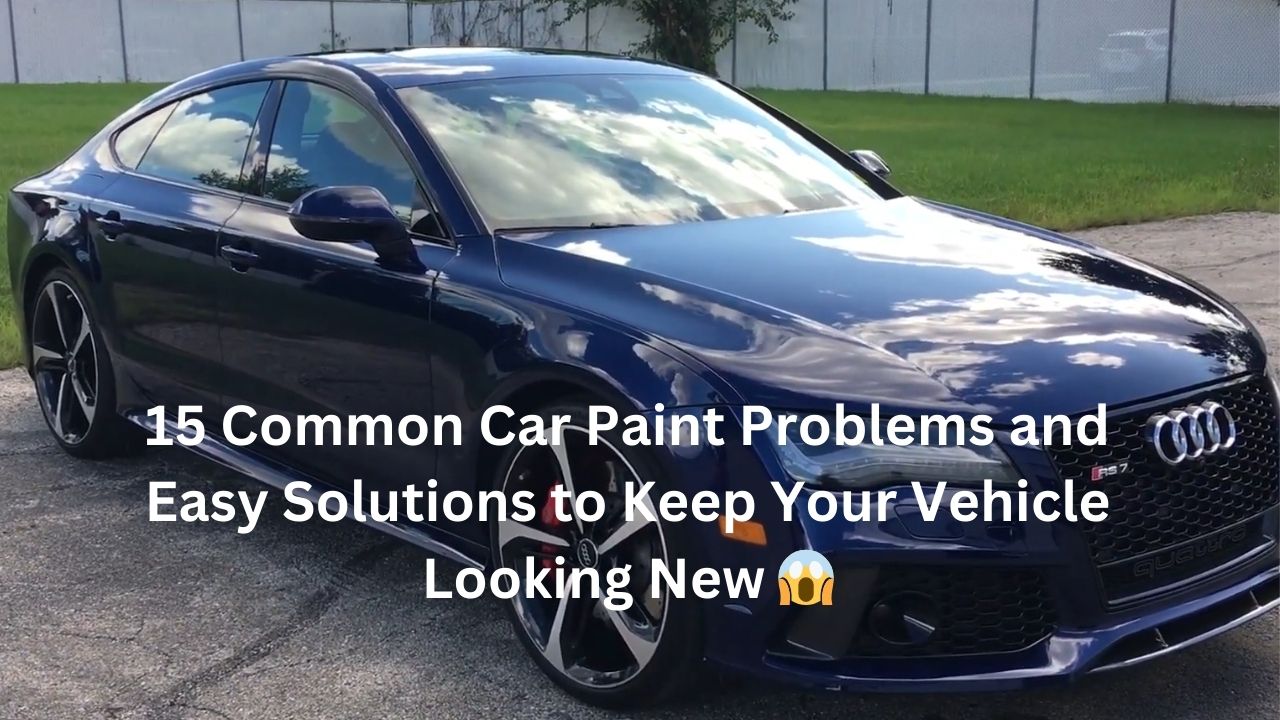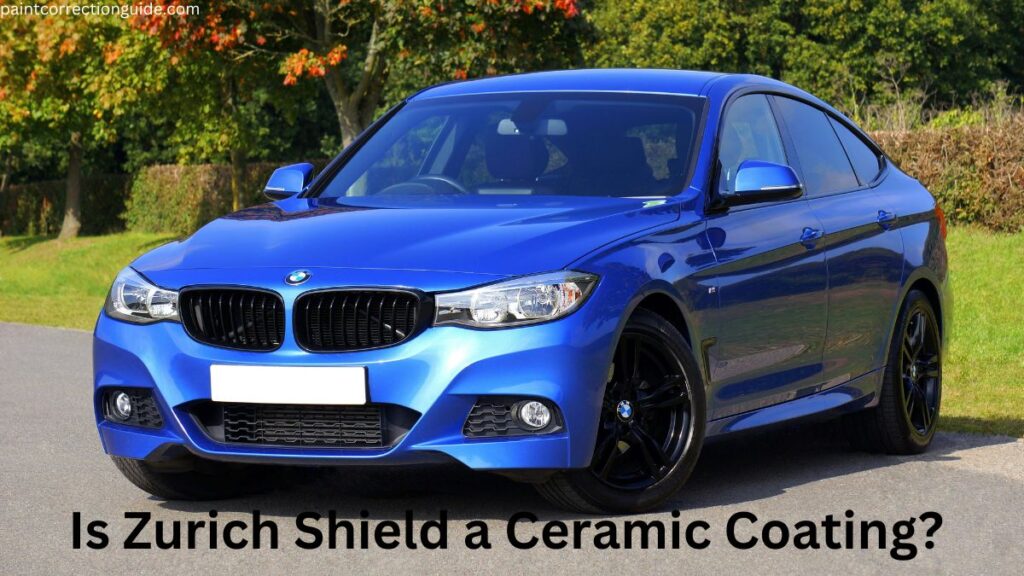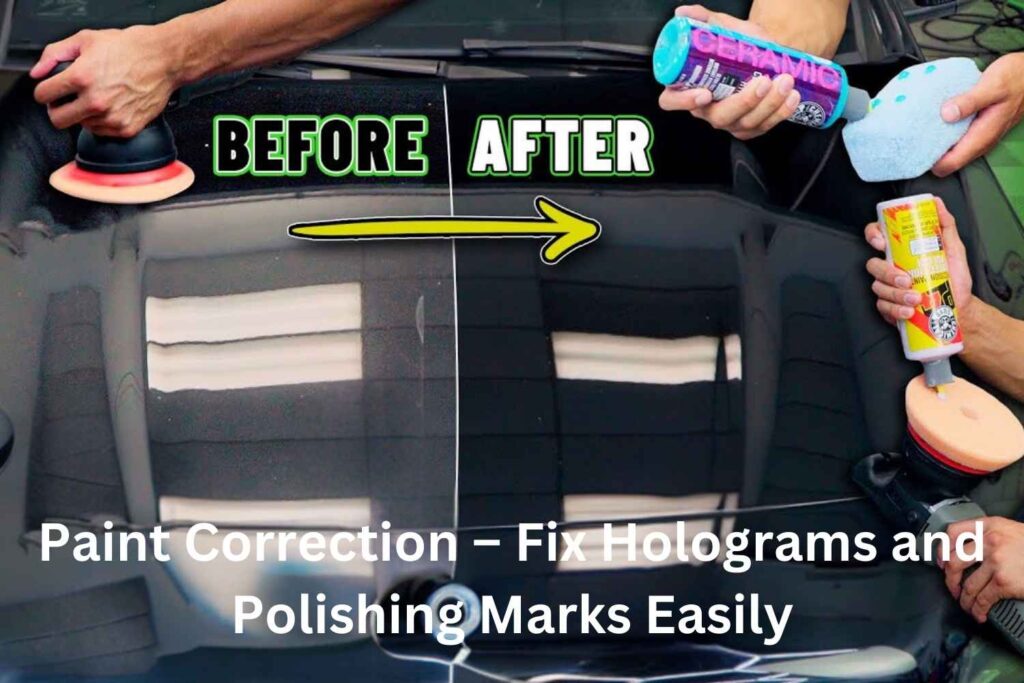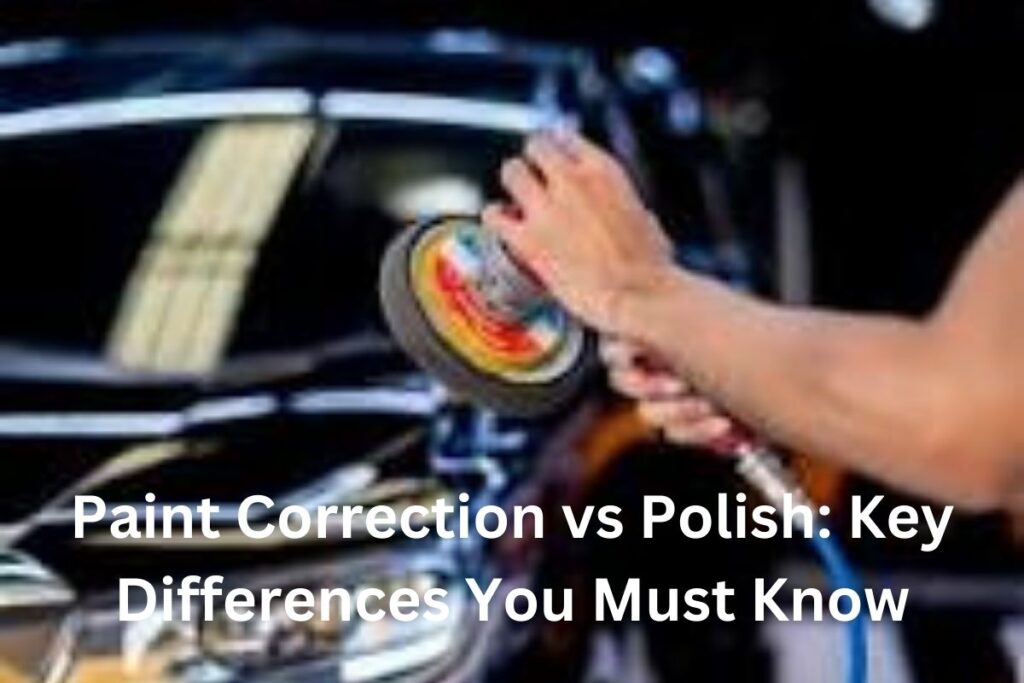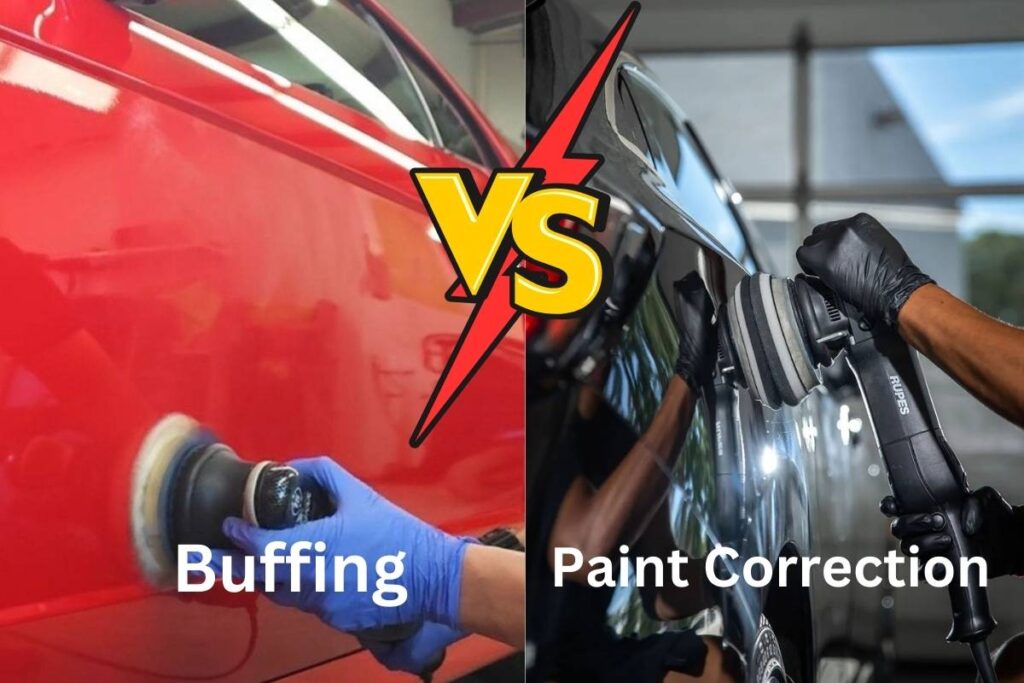Have you ever looked at your car and noticed scratches, fading, or stubborn spots that just won’t go away? Common car paint problems like these can make even the best-looking car appear aged and neglected. From everyday exposure to sunlight and rain to unexpected encounters with tree sap or bird droppings, a car’s paint faces constant challenges. But here’s the good news: most paint problems can be easily managed or prevented with the right know-how! In this post, we’ll explore 15 of the most common car paint issues, why they happen, and easy solutions to keep your car’s finish looking pristine. By the end, you’ll have all the tools you need to protect, restore, and enjoy that beautiful shine once again.
Table of Contents
ToggleWhy Car Paint Problems Happen
Before we dive into specific issues, let’s quickly talk about why car paint problems happen in the first place. Imagine the daily life of your car’s paint. It faces the sun, rain, dirt, and sometimes even bird droppings! All these things can affect how long the paint stays smooth and shiny.
The paint on a car has several layers: there’s the primer (which helps the paint stick to the metal), the base coat (which is the main color), and the clear coat (which adds shine and protection). When something goes wrong with any of these layers, the paint can start to look dull, scratched, or faded.
Now that you know the basics, let’s explore some of these common car paint problems and find out how to keep your car looking its best.
15 Common Car Paint Problems and How to Fix Them
1. Fading Paint
What Causes It?
One of the biggest enemies of car paint is the sun. Just like how our skin can get sunburned, car paint can fade over time if it’s exposed to a lot of sunlight. This happens because the sun’s UV rays break down the paint over time, making it lose its color and shine. Fading can make a once-bright car look old and tired.
Easy Solution:
To keep your car’s paint from fading, try to park it in a shady spot whenever you can. If you have a garage, use it! And when parking outside, consider using a car cover to block the sun. Another trick is regular waxing. Wax acts like sunscreen for your car, adding a layer that can help protect the paint from UV rays. Applying a coat of wax every few months will keep the paint looking bright and fresh.
2. Scratches and Swirl Marks
What Causes It?
Scratches and swirl marks are really common on car paint. These happen when something rough rubs against the car’s surface, like dirt on a cleaning rag or branches brushing up against the car. Even washing your car with a rough sponge can cause tiny scratches that make the paint look dull.
Easy Solution:
To prevent scratches, make sure to wash your car with a soft microfiber cloth and a gentle car soap. Avoid dry wiping, which can cause scratches. If your car already has some scratches, you can use a scratch remover product. These products are like gentle polishers—they smooth out the scratches, making them much less noticeable. For deeper scratches, though, you might need a professional touch.
3. Water Spots
What Causes It?
Ever notice those annoying little spots that show up on your car after it rains or if water dries on it? Those are water spots. They happen when minerals in water—like calcium and magnesium—are left behind on the paint as the water evaporates. These spots can be stubborn and hard to remove, especially if they’ve been on the paint for a while.
Easy Solution:
To avoid water spots, dry your car off right after washing it or after it rains. Using a soft towel to gently pat the surface dry helps keep those spots from forming. If you already have water spots, you can use a vinegar solution (just mix half water, half vinegar) to wipe them off. Vinegar is great at breaking down minerals, making it easier to remove the spots.
4. Bird Droppings
What Causes It?
Bird droppings may seem like just a minor annoyance, but they’re actually one of the most common car paint problems. Bird droppings are acidic, which means they can damage your car’s paint if they’re not removed quickly. When left on the car, the acids in the droppings start eating away at the clear coat, making the paint look dull and even leaving stains.
Easy Solution:
If you spot bird droppings on your car, try to clean them off as soon as possible. Use a soft cloth with some water or a gentle cleaner to wipe it away without rubbing too hard. Rubbing can actually spread the acid around, so it’s best to dab it gently. If you want to be extra prepared, keep some car-friendly cleaning wipes in your glove box for quick clean-ups. Regular waxing also helps add a protective layer to keep bird droppings from causing as much harm.
5. Tree Sap and Resin Stains
What Causes It?
If you park under trees often, you might find sticky spots on your car’s paint. This sticky stuff is tree sap or resin. Sap can be very tough on car paint because it sticks hard to the surface and can even dry out, making it harder to remove over time. The longer sap stays on the car, the more damage it can do to the paint.
Easy Solution:
To deal with sap, you can use a special tree sap remover or some rubbing alcohol. Just dab a little on a soft cloth and gently wipe the sap until it lifts off. After removing the sap, wash the area with car soap to make sure there’s no sticky residue left. If you can, try to avoid parking directly under trees, especially during spring when sap is more likely to drip.
6. Oxidation
What Causes It?
Oxidation is another one of those common car paint problems that can make your car look older than it really is. This happens when the paint is exposed to too much oxygen and sunlight without protection. Over time, the paint starts to lose its shine and looks chalky or dull.
Easy Solution:
To fix oxidation, you’ll want to use a clay bar or a polishing compound. A clay bar can help remove the oxidized layer and any other contaminants that may be sitting on top of the paint. After using the clay bar, polish the car and then apply wax to add a layer of protection. Regular waxing is important to prevent oxidation from happening again.
7. Clear Coat Peeling
What Causes It?
The clear coat is the top layer of your car’s paint that gives it that glossy shine. Sometimes, if the car has been exposed to too much sun or harsh weather, the clear coat can start to peel off. This leaves patches where the paint underneath looks rough or dull. Clear coat peeling is a common car paint problem, especially for cars that haven’t been waxed or protected often.
Easy Solution:
Once the clear coat starts peeling, fixing it can be tricky on your own. For minor peeling, you can try lightly sanding and reapplying a clear coat, but this usually works best with professional help. To prevent peeling, keep your car covered when possible, and remember to wax it regularly. The wax adds an extra layer that can help the clear coat last longer.
8. Acid Rain Damage
What Causes It?
Acid rain happens when pollutants in the air mix with rainwater, creating water that’s more acidic than normal. When this rain lands on your car, the acid can damage the paint over time, leaving it dull and even causing etching, which looks like tiny marks or pits on the surface.
Easy Solution:
To prevent acid rain damage, make sure to wash your car regularly, especially after it rains. Keeping a layer of wax or ceramic coating on your car’s paint also helps protect it from acid rain. If your car already has some acid rain spots, a light polish can help to reduce the appearance of any marks.
9. Rust Spots
What Causes It?
Rust spots are one of the more serious common car paint problems that can happen if your car’s metal is exposed to water and air for too long. Rust usually starts when small chips or scratches break through the paint and expose the metal underneath. When water and oxygen touch the exposed metal, it starts to rust. Over time, rust spots can grow and damage the car’s body.
Easy Solution:
To take care of rust spots, the first thing you’ll need to do is clean the area. Use a soft cloth to remove any dirt or loose rust. Then, lightly sand the rusty spot until you see clean metal. After that, apply a little touch-up paint that matches your car’s color. You can find touch-up paint at most auto parts stores. Once the paint is dry, add a layer of wax to keep the area protected from water.
10. Paint Blistering
What Causes It?
Paint blistering happens when tiny bubbles form under the paint. This can happen if moisture gets trapped under the paint layer or if the car was painted in very humid conditions. Extreme heat can also cause paint blistering, which makes the surface look bumpy instead of smooth.
Easy Solution:
If you notice small blisters in your car’s paint, it’s usually best to consult a professional, as repairing blistering can be tricky. They’ll likely need to sand down the area, reapply primer, and paint it again. To help prevent blistering, try to keep your car out of extreme heat and humidity. Parking in a garage or shaded area can protect the paint from conditions that lead to blistering.
11. Stone Chips
What Causes It?
Stone chips are tiny chips in the paint caused by small rocks or gravel hitting the car while driving, especially on highways. This is one of the most common car paint problems, especially for people who drive a lot. When these tiny stones hit the car’s paint at high speed, they leave small marks that can expose the metal underneath.
Easy Solution:
To fix stone chips, you can use touch-up paint for small areas. Just dab a tiny bit of paint on the chip with a brush or toothpick to cover the exposed spot. Another way to protect your car from stone chips is by adding a clear paint protection film (PPF) on the front of the car, where stone chips are most likely to happen. This clear film acts like a shield, helping protect the paint from stones and other debris.
12. Swirl Marks
What Causes It?
Swirl marks are those faint, circular scratches you might notice on your car, especially in bright sunlight. These happen when the car is washed or dried with rough towels or sponges. Even small pieces of dirt or sand can cause swirl marks if they rub against the paint while cleaning.
Easy Solution:
To prevent swirl marks, always use a soft microfiber towel and a gentle car soap when washing your car. Never use regular household sponges, as they can be too rough. If your car already has swirl marks, you can use a polishing compound to smooth them out. Polishing helps bring back the car’s shine and reduce the appearance of swirls. To finish, apply a layer of wax to add protection and a glossy look.
13. Chemical Stains
What Causes It?
Chemical stains are spots or marks on the car’s paint caused by harsh chemicals. Things like gasoline, road salt, or even certain cleaning products can leave stains if they sit on the paint for too long. Chemical stains are common car paint problems that can be hard to remove if they’re not cleaned right away.
Easy Solution:
If you get gasoline or another chemical on your car’s paint, wipe it off immediately with a damp cloth. To prevent stains, avoid using household cleaners on your car. Always choose car-safe cleaning products that are gentle on the paint. If you notice a stain that won’t come off, you can try using a clay bar or a gentle polish to remove it. These tools help lift tough stains without damaging the paint.
14. Sap and Pollen Deposits
What Causes It?
Sap and pollen are sticky and can harden on your car’s paint, especially in the springtime when trees are full of sap and flowers are releasing pollen. If left on the paint, these deposits can become tough to remove and may even leave stains or damage the paint surface.
Easy Solution:
To remove sap and pollen, use a soft cloth with a gentle car cleaner or rubbing alcohol. Dab the cloth on the sap or pollen spots until they come off. Avoid scrubbing, as this can scratch the paint. A good tip is to regularly wash your car, especially if you park near trees. Waxing your car can also create a protective layer, making it easier to clean off sticky deposits in the future.
15. Paint Transfer Marks
What Causes It?
Paint transfer marks happen when your car lightly brushes against something painted, like another car or a painted wall. This transfers a bit of the other paint onto your car’s surface, creating a mark. Paint transfer marks are one of those common car paint problems that look worse than they actually are.
Easy Solution:
To remove paint transfer marks, try using a little rubbing compound on a soft cloth. Gently rub the mark until it starts to come off. Be careful not to press too hard, as this can damage the paint underneath. Once the mark is gone, wash and wax the area to restore the shine and add protection.
Preventive Measures to Maintain Car Paint
Alright, now that we’ve gone through the list of common car paint problems and their fixes, let’s talk about how to prevent these issues from happening in the first place. A little bit of care can go a long way in keeping your car’s paint shiny and protected. Here are some simple steps you can take to keep your car’s paint looking like new.
Regular Washing and Waxing
Keeping your car clean is one of the easiest ways to protect the paint. Dust, dirt, and pollutants can stick to your car and cause tiny scratches or dull spots. Regular washing helps remove all this grime before it has a chance to harm the paint. Here’s what I recommend:
- Wash Every Two Weeks: Try to give your car a gentle wash every couple of weeks. Use car soap, not dish soap, which can be too harsh.
- Use a Soft Cloth or Microfiber Towel: These materials are gentle on paint and won’t cause scratches. Avoid using rough sponges or towels.
- Dry Your Car After Washing: Leaving water on the car can lead to water spots. Pat it dry with a soft cloth.
Waxing is like putting a protective shield on your car’s paint. It helps block out dirt, water, and UV rays, which can all cause paint problems. Wax your car every three to six months to keep it safe and shiny.
Use Car Covers or Park in the Shade
One of the major causes of common car paint problems is exposure to sunlight and harsh weather. When possible, park your car in a garage or shaded area to protect it from UV rays. If you don’t have access to a covered parking spot, consider using a car cover.
- Car Covers: A car cover is like a shield for your car. It keeps the paint safe from sun, rain, dust, and even bird droppings. Just make sure the cover fits properly and is made for outdoor use.
- Shade Parking: If you can’t use a cover, try parking under a tree or in a shaded spot. Shade helps prevent fading and keeps your car cooler.
Invest in a Paint Protection Film (PPF) or Ceramic Coating
If you want extra protection for your car’s paint, a paint protection film (PPF) or ceramic coating can be a great investment.
- Paint Protection Film (PPF): This is a clear, thin film applied to areas like the hood, bumper, and mirrors, where chips and scratches are most likely to happen. PPF is tough and can absorb small impacts, which keeps the paint safe underneath.
- Ceramic Coating: A ceramic coating is a liquid polymer that bonds to the paint, creating a protective layer. It makes the car’s paint more resistant to water, dirt, and even UV rays. Ceramic coating also makes washing the car easier since dirt doesn’t stick as easily.
While these options are a bit of an investment, they can save you money on repairs for common car paint problems in the long run.
Avoid Parking Under Trees and Near Polluted Areas
Tree sap, bird droppings, and pollution can all damage your car’s paint. To prevent these problems:
- Stay Away from Trees: Parking under trees increases the chance of sap and bird droppings landing on your car. It’s best to avoid these spots when possible.
- Be Careful Near Factories or Construction Sites: Pollution and dust from these areas can settle on your car, causing dullness and stains. If you’re near a factory or a construction area, try to find a spot that’s farther away.
Quickly Clean Off Bird Droppings, Sap, and Stains
If you see bird droppings, tree sap, or any other sticky substances on your car, clean them off right away. These can harm your car’s paint if left for too long.
- Keep Cleaning Wipes in the Car: Having some car-safe wipes in the glove box is helpful. If you notice any sticky spots, you can clean them on the go.
- Dab, Don’t Scrub: When cleaning off sticky spots, gently dab the area instead of scrubbing, which can scratch the paint. If the stain doesn’t come off, you might need a specialized cleaner.
Use the Right Washing Technique
Washing your car the right way can make a big difference in preventing common car paint problems like swirl marks and scratches. Here’s how to do it:
- Use the Two-Bucket Method: Have one bucket with soapy water and one with clean water. Rinse your sponge or cloth in the clean water before dipping it back into the soapy water. This helps keep dirt out of the soapy water, reducing the chance of scratches.
- Start from the Top Down: Begin washing at the top of the car and work your way down. The bottom of the car is usually the dirtiest, so cleaning it last prevents dirt from spreading.
- Rinse and Dry: After washing, rinse your car thoroughly to remove all soap. Then, dry it with a microfiber towel to prevent water spots.
Following these simple steps can make a big difference in keeping your car’s paint looking fresh and shiny. By taking care of your car and protecting it from common car paint problems, you can keep it looking new and avoid costly repairs.
When to Consult a Professional for Common Car Paint Problems
Sometimes, no matter how careful we are, our cars end up with paint issues that need more than just a quick fix. While many common car paint problems can be handled at home, some situations call for expert help. Let’s go over a few cases when it’s best to take your car to a professional.
1. Deep Scratches and Dents
If you have a scratch that’s gone through the clear coat and base color, exposing the metal underneath, it’s best to let a professional handle it. Deep scratches are tricky because they can lead to rust if they’re not repaired properly. Auto body shops can sand down the damaged area, apply matching paint, and finish with a fresh clear coat. This ensures a smooth, even look without leaving any rough patches.
2. Clear Coat Peeling
Peeling clear coat is one of the more challenging common car paint problems. When the clear coat starts to come off, the paint underneath loses protection and begins to fade or wear away. While small areas of peeling might be touched up at home, large areas often need professional re-coating. Auto detailing professionals can reapply the clear coat with specialized tools to give your car a glossy, protected finish.
3. Extensive Rust Spots
Tiny rust spots are manageable with some DIY touch-ups, but large rust areas should be addressed by a professional. Rust can spread quickly if not treated, eating away at the car’s body and causing structural damage. Professionals will sand down the rusted area, treat it with anti-rust products, and apply fresh paint to seal it up. This way, your car stays safe and rust-free for a long time.
4. Blistering or Bubbling Paint
Blistering, or bubbles in the paint, happens when moisture or heat gets trapped under the paint layer. This is a common issue in very humid or hot climates. Fixing blistering requires sanding down the affected area, applying primer, and repainting the surface. This is a complex process, and professionals have the tools and expertise to ensure it’s done correctly. A professional repair prevents further bubbling and keeps the paint looking smooth.
5. Paint Fading on Large Areas
Minor fading can be improved with wax or polish, but if a large area of your car has lost its color or shine, a professional can restore it. Detailing experts can use high-quality polishers and machines to buff the faded paint back to life. They can also add a ceramic coating or paint protection film afterward to keep the paint from fading again.
Conclusion
Knowing when to handle common car paint problems yourself and when to seek professional help can save you time, money, and effort in the long run. By understanding the causes of these paint problems and using preventive measures, you’ll keep your car looking like new. And when an issue is beyond DIY, professional help ensures a top-notch finish that will last.
Taking care of your car’s paint isn’t just about looks—it’s about protecting your investment and keeping your car in great shape for years to come. Whether it’s a small scratch or a major paint job, keeping an eye on your car’s paint will keep it looking sharp and shiny!
Disclaimer
The information provided in this article is for general guidance on car paint care and maintenance. Always consult a professional for specific paint issues or before attempting repairs that may require specialized tools or expertise.

